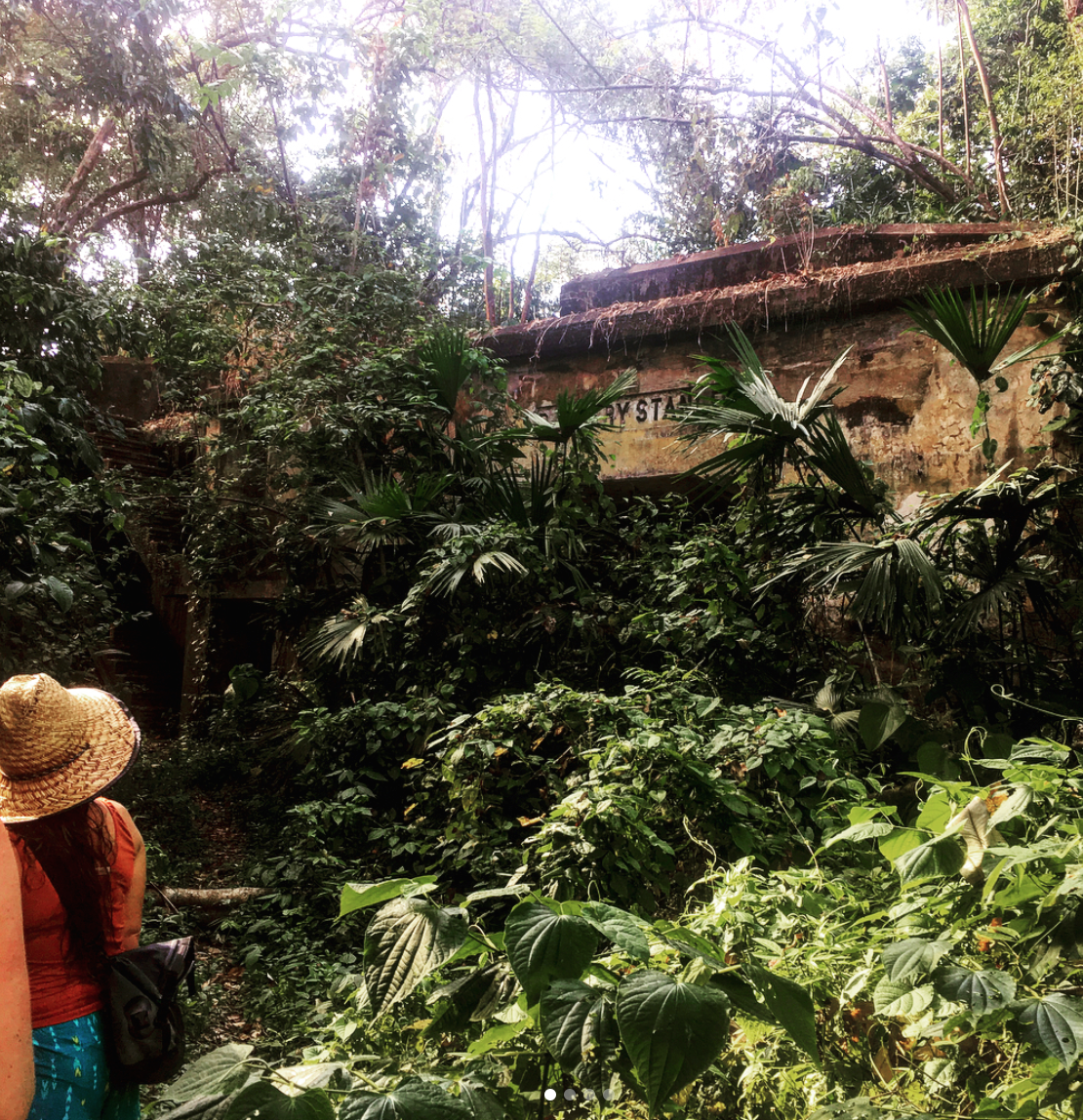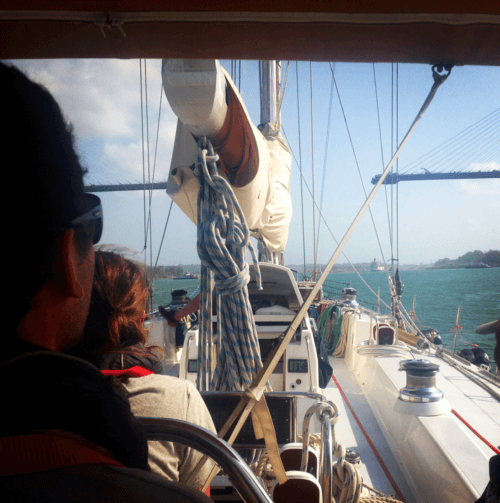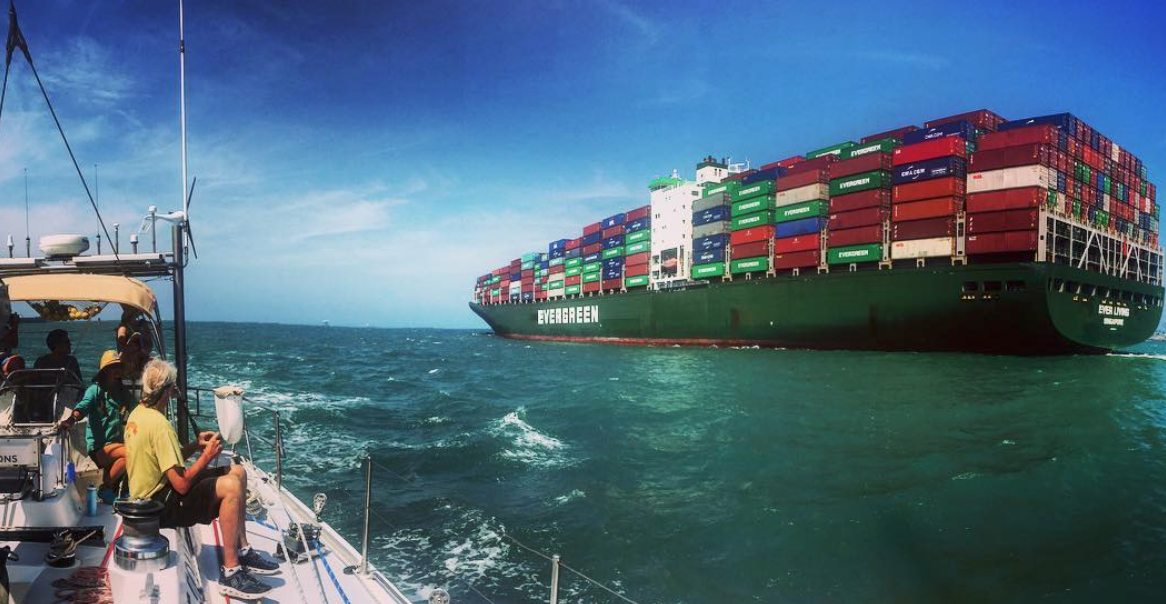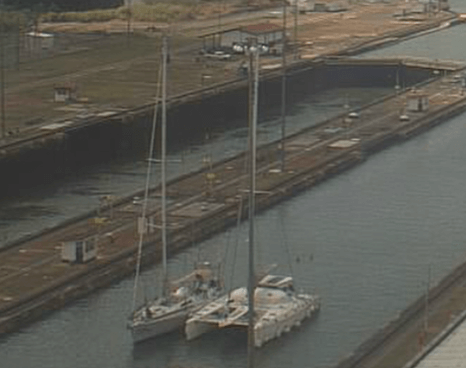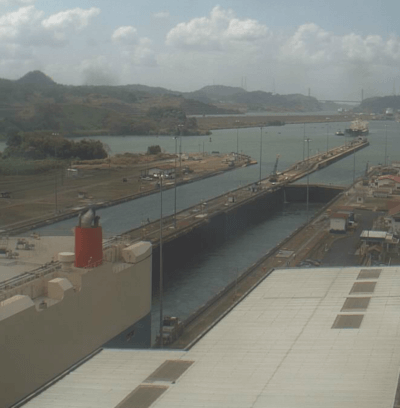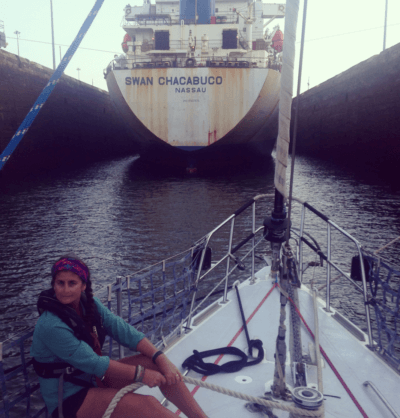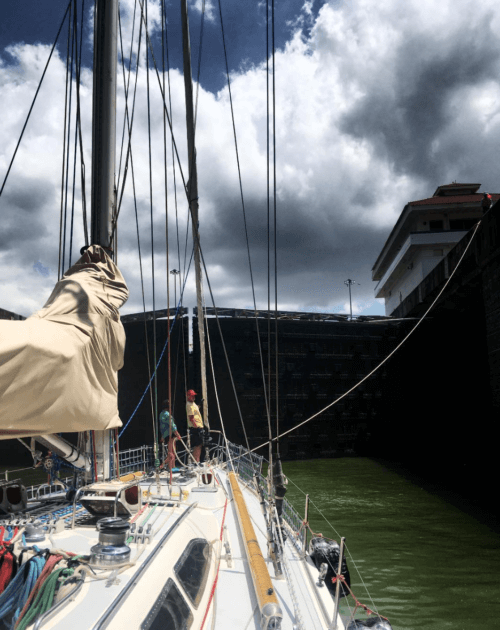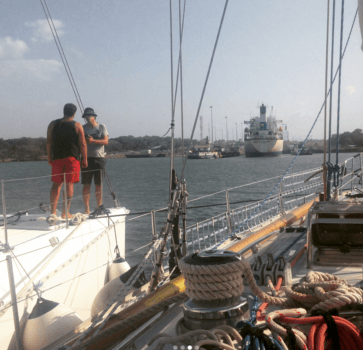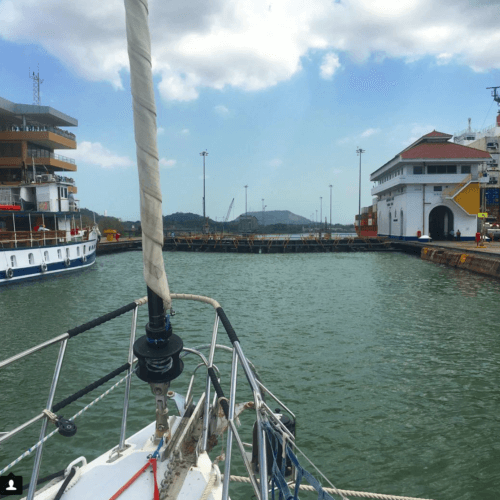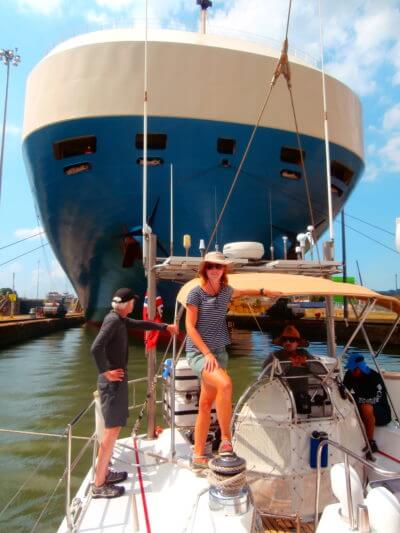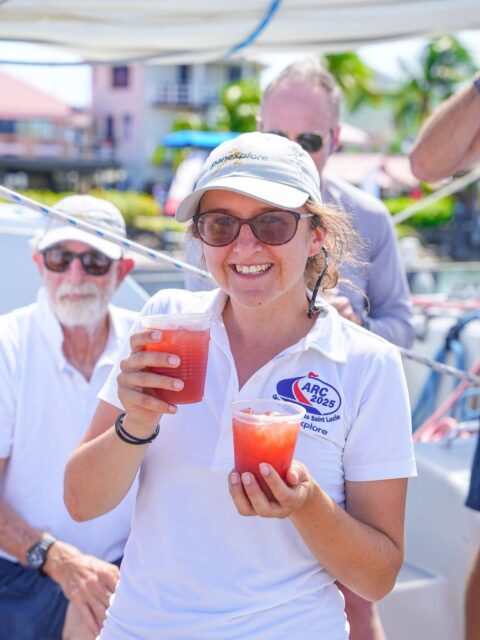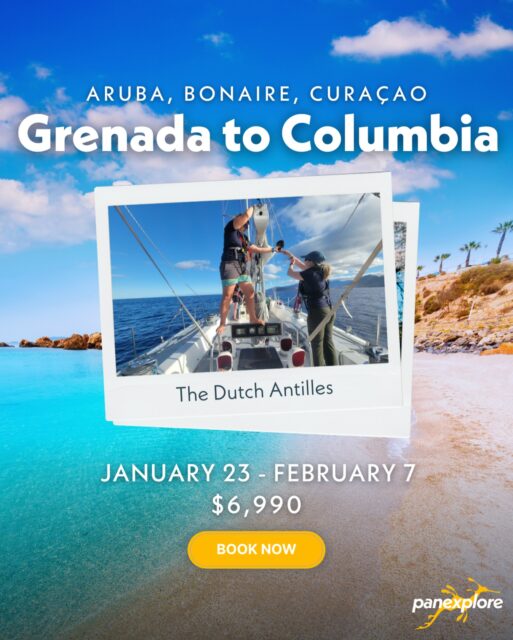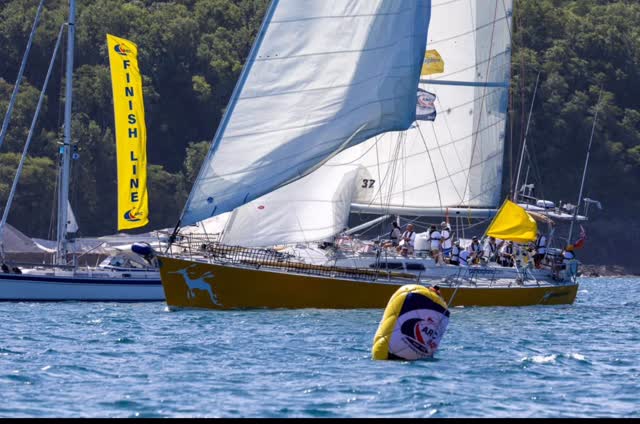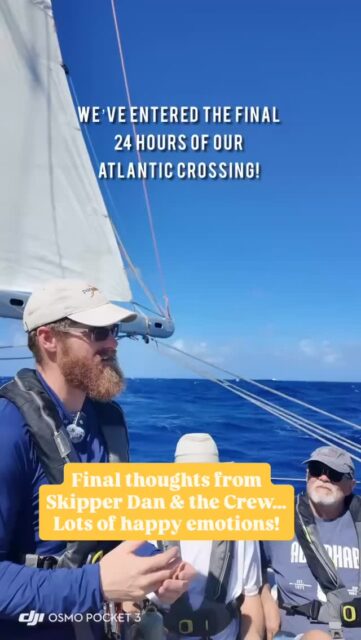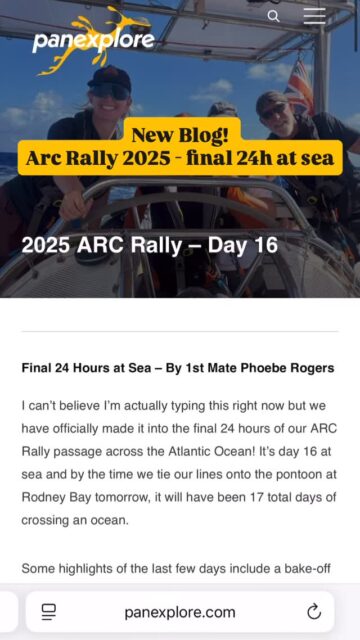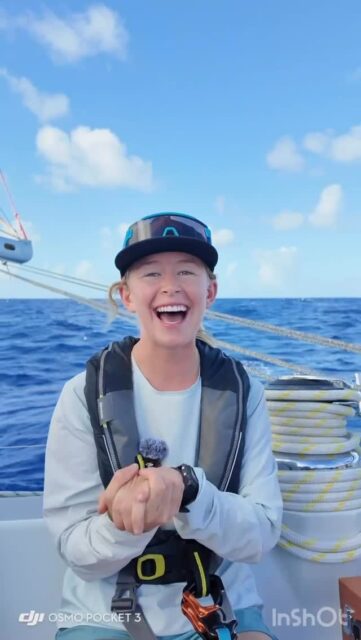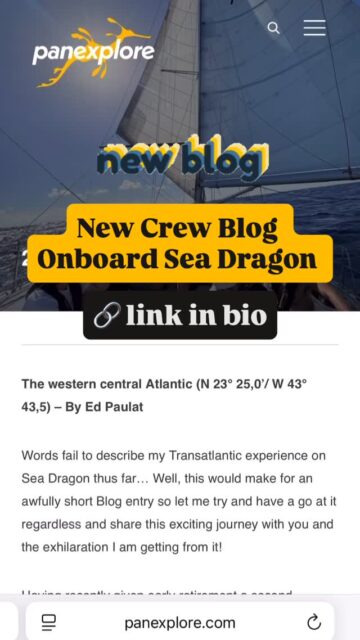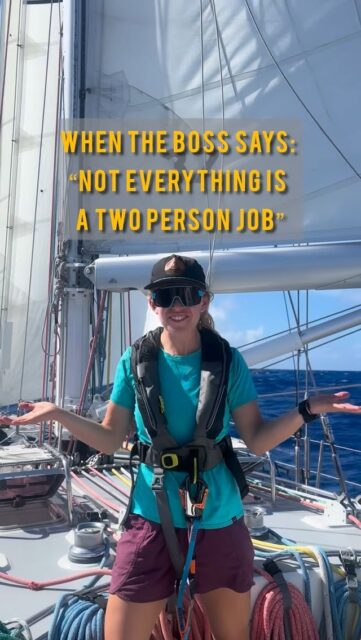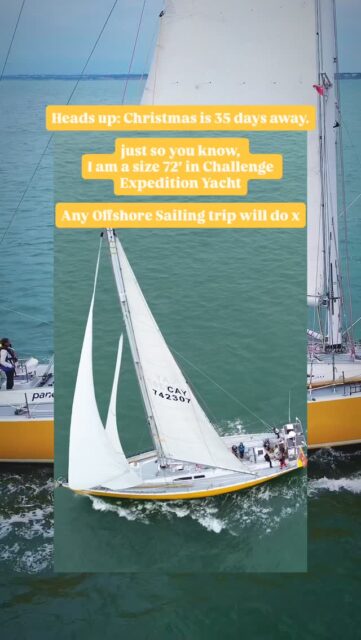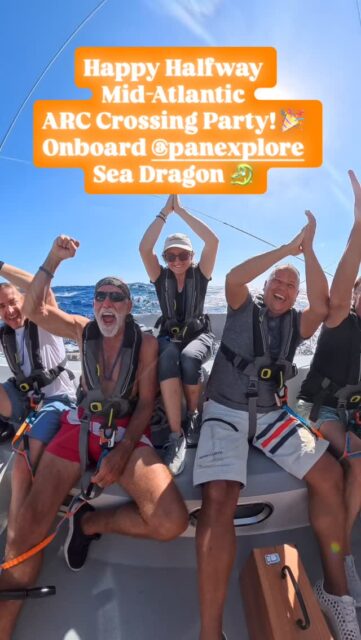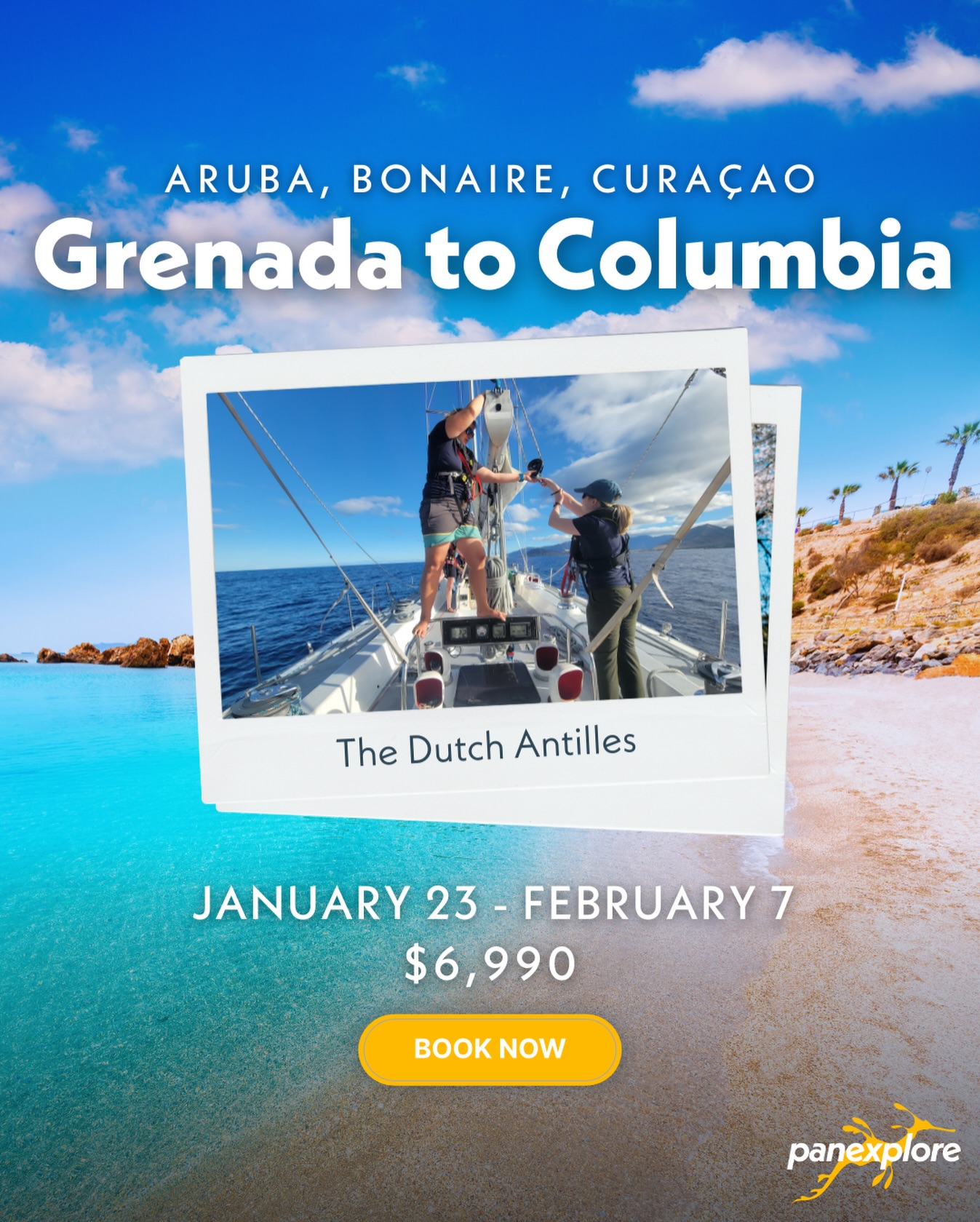Goodbye Caribbean, Hello Pacific
by Iona Taylor – Deckhand aboard Sea Dragon.
Shelter Bay is a little community marina set out far from civilization in the old US military barracks west of Colon. It has a small boat yard, a pool, restaurant as well as a small selection of stores, a few nearby beaches and forts a short walk away through the forest which housed monkeys and poisonous toads (definitely not to be licked/ kissed!) and became our home for the 4 days we waited to transit the canal.
photo credit Iona Taylor
The more permanent residents had set up daily yoga and aqua aerobic sessions as well as some evening entertainment including a pot luck BBQ grill giving the marina a really welcoming family feel.
Our boat went through the measuring process and was allocated a slot for Tuesday afternoon with mooring lines and tyre fenders delivered the day before.
All extremely excited and with 3 new fresh faced crew members aboard we had a quick early lunch before making our way out to our designated anchorage to pick up our pilot for the crossing (complying with thelegal requirement – all boats must have a pilot onboard whilst transiting through the canal).
photo credit SD Crew
The anchorages are situated in a sheltered bay surrounding Colon and the eastern mouth of the canal protected by a battered rock sea wall and housing the many tankers and cargo ships awaiting their transit slot or planning their route out.
photo credit Jen Pate
Our pilot was a nice older local man who accompanied us through the first half of our journey. We left the anchorage around 4pm and made our way straight to the first lock, motoring under the partly constructed but impressively engineered bridge that will connect Shelter Bay to Colon and the surrounding area.
We had been allocated to go through the older canal locks as the new ones are solely used for the larger ships that no longer fit through the smaller diameter, we were also assigned a catamaran to be rafted to, spanning the width of the locks.
photo credit SD Crew
Construction of the canal and locks was started in 1881 by the French but due to engineering difficulties and a high mortality rate the US took over construction and the locks were finally completed on 15 August 1914. The canals were expanded between 2007 and 2016 to accommodate the newer larger ships
photo credit Iona Taylor
The first set of locks (Gatun Locks) were ‘up locks’ starting at sea level and filling over the course of 3 separate locks to reach the level of the lake Gatun. Our lines were run straight from our bow and stern on our starboard side and from the catamarans port side up to the walls of the lock and carefully managed as the water level increased, sneaking us upwards until we had a beautiful view of the locks and lake ahead of us. For these locks we had also been paired up with a big tanker that was positioned ahead of us. Due to the size and weight of these ships, their lines are handled by men in little trains on tracks along the side of the locks and are guided into and out of the locks by tug boats to aide the close quarter maneuvering necessary for them to fit in.
photo credit Iona Taylor
The 3 Gatun locks were situated a short distance apart leading up to the large expanse of the lake, covering 164sq miles and 33km of the canal transit.
We arrived at the lake as dusk was falling and had a short period of motoring through the buoyed canal in the half light with birds fluttering around us and small shrubby islands poking up from the emerald green waters either side of us.
We continued our motor through the lake in darkness, coming across the small town of Gamboa with a little train line running along the waters edge and dredging barges parked up along the side from working on the canal.
We shared a mooring buoy with our friendly catamaran neighbours overnight, watching the big tankers pass by. Our pilot was collected that evening and a new one dropped off around 10:30 the following morning, giving us a slow leisurely wake up and some time to take in our surroundings.
To enter the next set off locks it was about an hour motoring along a fairly narrow channel with a few road bridges passing overhead and forested hills either side. We passed by a number of yachts and a beautiful tall ship traveling in a west to east direction before coming across the smaller looking Pedro Miguel lock, the first of our
‘down locks’ into the Pacific sea.
photo credit Iona Taylor
As we did on Tuesday we rafted alongside the catamaran and rigged our lines along the dock sides but this time we were squeezed in to the very front of the lock whilst we waited for an absolutely massive tanker to squeeze in behind us, slightly too close for comfort and barely fitting in between the walls of the lock.
photo credit Iona Taylor
This time as we dropped down the 85 ft to sea level, the opening of the lock gates gave us an enticing view into the journey ahead of us.
Pedro Miguel lock was quickly followed by the 2 Miraflores locks, the first lock was overlooked by a webcam (as we were keenly followed by our relatives at home) and a huge 3 tiered stand of spectators who keenly waved and hooted us through. The final lock led us straight out into the mouth of the isthmus and into the industrial area just west
of Panama City. We departed from our catamaran friends and motored on to our new home just anchoring outside of the slightly too shallow marina on Isla Flamenco, enjoying a very brisk dip into the Pacific Ocean!!
photo credit Iona Taylor
Here we have to say goodbye to five of our crew, some of whom have been with us for the past 3 weeks and all will be sorely missed. But life aboard sea Dragon must continue as we head up the west coast to Cabo San Lucas, Mexico we plan our departure for Monday.
photo credit Iona Taylor
